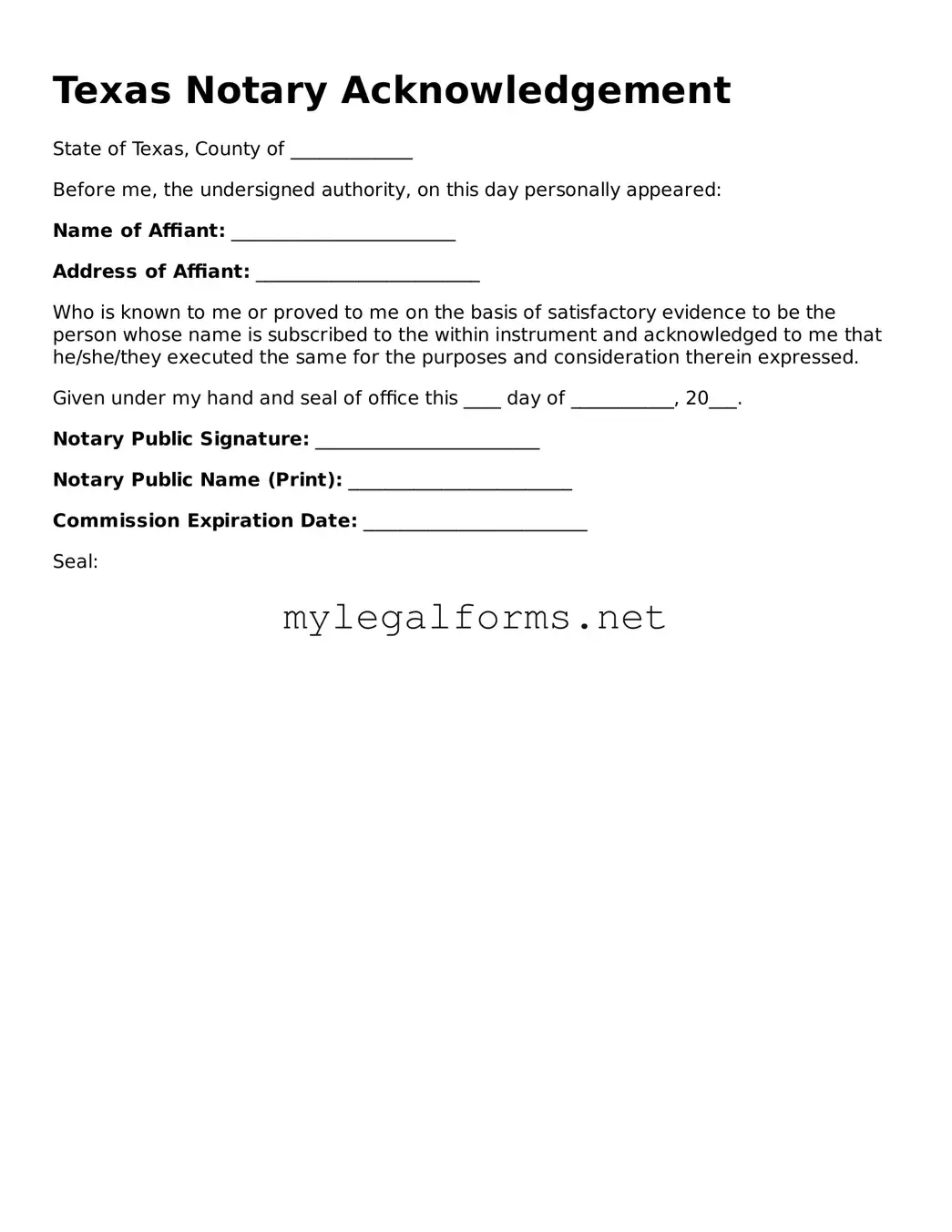Notary Acknowledgement Document for Texas State
The Texas Notary Acknowledgment form serves as a formal declaration by a notary public, confirming that a signer has willingly executed a document. This form is essential for ensuring the authenticity of signatures and the integrity of legal transactions. Understanding its purpose and requirements can help individuals navigate the notarization process effectively.
Launch Notary Acknowledgement Editor
